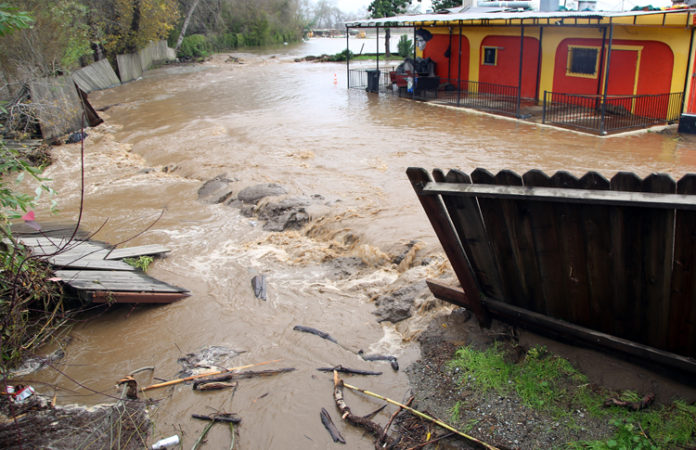
Later this year, the US Army Corps of Engineers (USACE) and the Pajaro Regional Flood Management Agency (PRFMA) will start construction of its $600 million Pajaro River Flood Risk Management Project, a long overdue effort to improve levees along the Pajaro River and Corralitos and Salsipuedes creeks.
The project will significantly reduce flood risk for communities on both sides of the Pajaro River.
But it doesn’t address all the gaps in the flood protection system for the lower Pajaro River region.
This includes about two miles of the Pajaro River levee on the Monterey County side. Upcoming maintenance activity will be at—and downstream of—the levee breach that flooded Pajaro in March 2023.
To help fund projects like this, PRFMA is pursuing funding, implementing a combination of projects and planning studies for future improvements, said PRFMA Board Chair and Santa Cruz County Supervisor Zach Friend.
“Although the Agency is still in its infancy, it’s already demonstrating remarkable success in securing federal and state grant funding and harnessing local resources to meaningfully reduce flood risk,” Friend said.
PRFMA Director Mark Strudley said that part of the river posed a substantial risk because of the height difference.
“We’ll be adding between one half to two feet of fill to restore it to the original design standard and ensure that levees on both sides of the river are the same height,” Strudley said. “We’re also reshaping levee side slopes for more structural integrity.”
According to Strudley, the project will extend the design life of the levee up to 10 years. The goal is to improve the near-term safety profile of the levee until the USACE can implement a more comprehensive, long-term fix through the Pajaro River Flood Risk Management Project, which is expected to completely rebuild these levees from the ground up.
The maintenance project is estimated to cost $658,000, which is to be funded by a combination of contributions from its member agencies as well as the levee operations and maintenance benefit assessment that was established in 2022.
The total project cost was lessened because 10,000 cubic yards of clean levee fill material was both donated and delivered for free by Cubix Construction and another 7,000 cubic yards was donated by Pajaro Valley Water Management Agency and its contractor, Mountain Cascade, Inc. Santa Cruz County’s Zone 7 Drainage Crew will be completing the work, which also provides significant savings as well.
In comparison, emergency construction of 3,000 feet of temporary muscle wall in 2023 cost approximately $400,000.
In the meantime, PRFMA has secured nearly $14 million in federal and state grant funding for flood protection improvements that won’t be covered under the USACE project. These include:
• A $10 million National Oceanic and Atmospheric Administration (NOAA) grant, in partnership with the California Marine Sanctuary Foundation, as well as approximately $900,000 from the State Department of Conservation, to address flood risk reduction alternatives for the Santa Cruz County side of the confluence of the Pajaro River and Salsipuedes Creek, sometimes called the “fish head” area. The levee on the Monterey side will be replaced under the USACE project.
• A $2.25 million grant, in partnership with the Association of Monterey Bay Area Governments (AMBAG), to conduct planning and environmental work for improvements to the Highway 1 crossing over the Pajaro River. This area suffered a levee breach during the early 2023 storm events.
• A $400,000 FEMA Building Resilient Infrastructure and Communities grant, in partnership with Santa Cruz County Flood Control and Water Conservation District Zone 7, for the Pajaro Bridge to Bay project. The grant will be used to advance the study of flood risk reduction alternatives for the urban and agricultural areas starting at the Highway 1 Bridge down to the ocean.
• A $210,000 FEMA grant to develop a Local Hazard Mitigation Plan. Completion of the plan will position PRFMA to directly apply for and receive FEMA grant funding for non-emergency disaster projects and programs, such as Building Resilient Infrastructure and Communities grants.For information, visit prfma.org.











